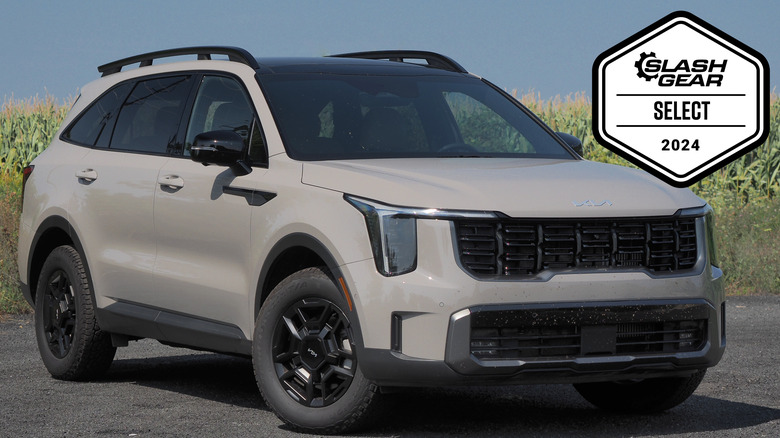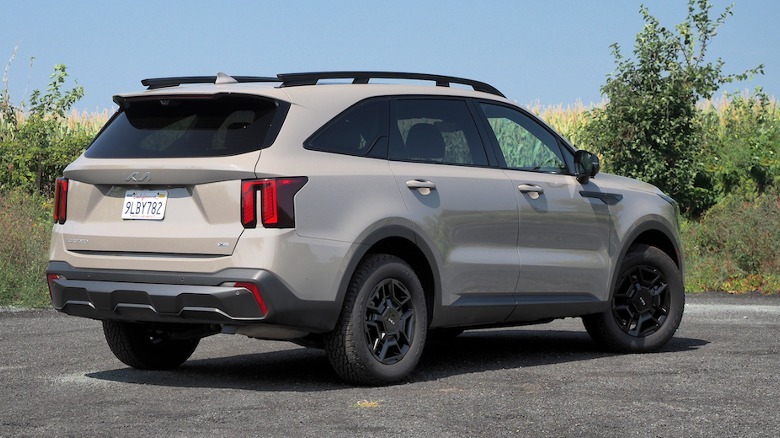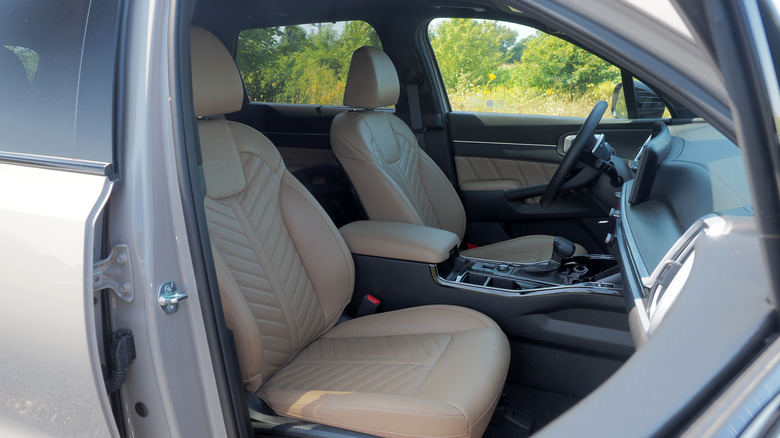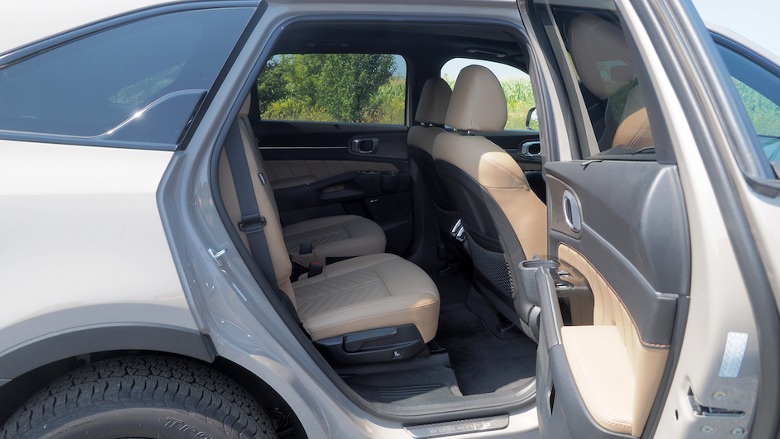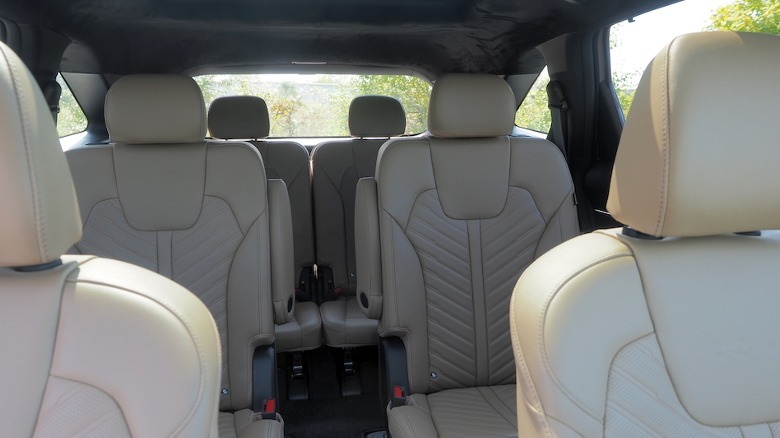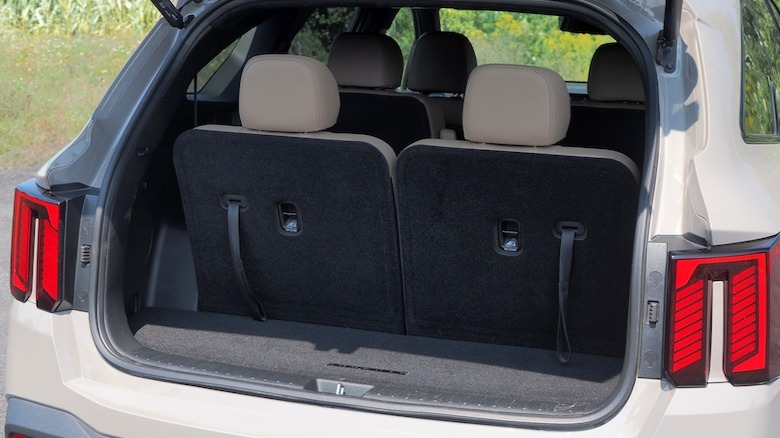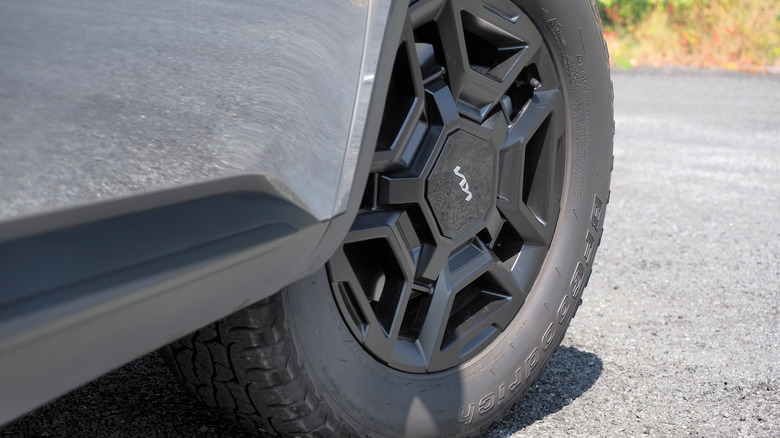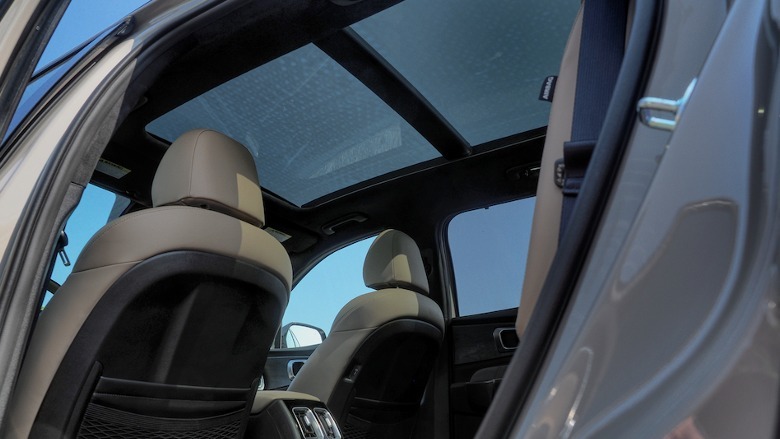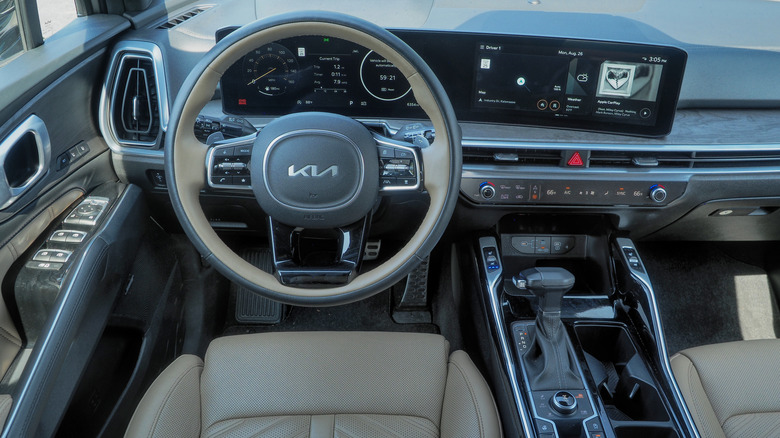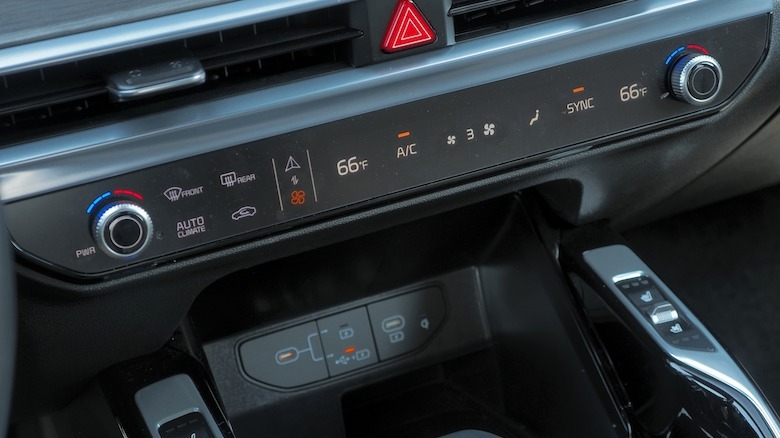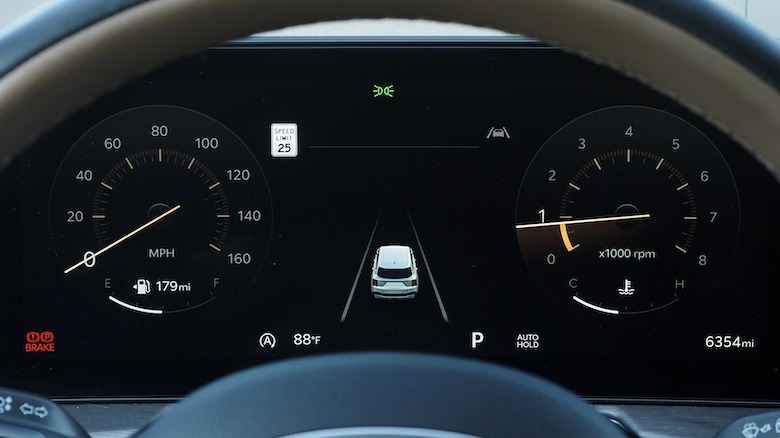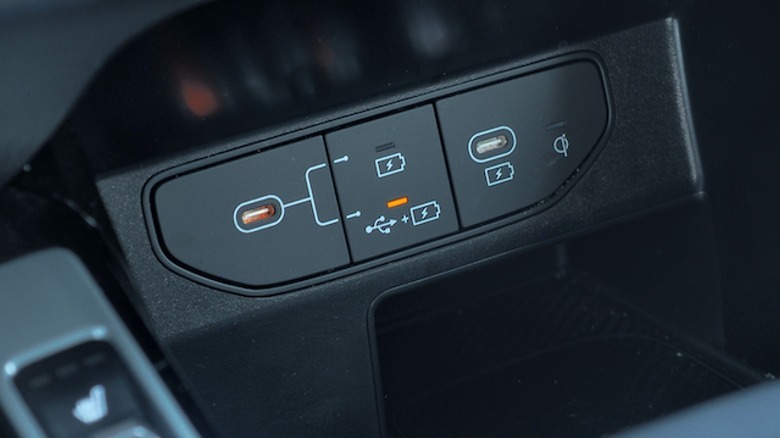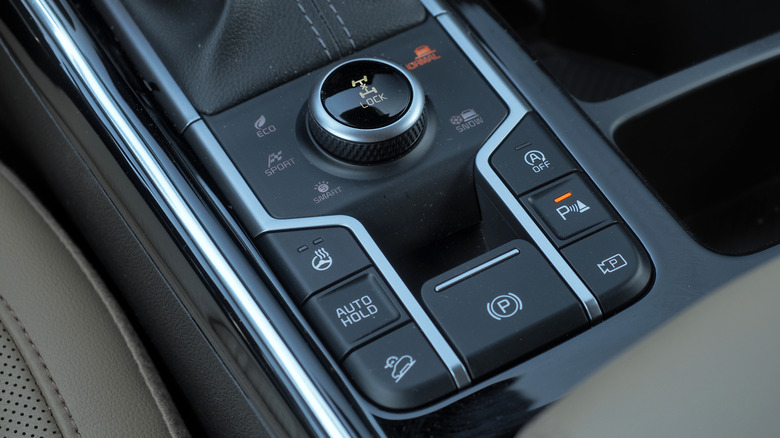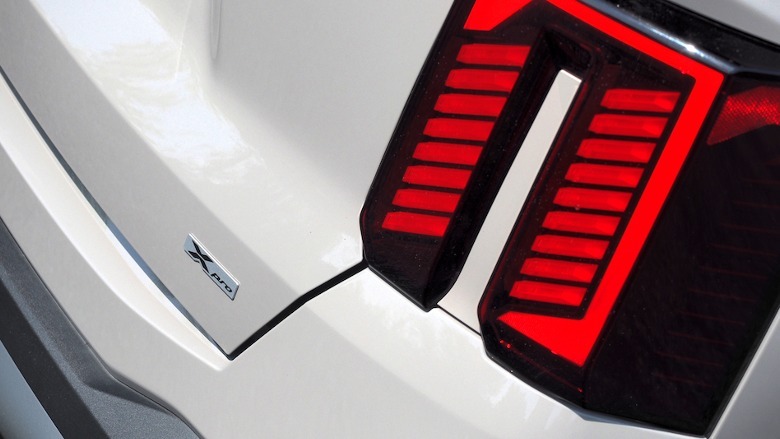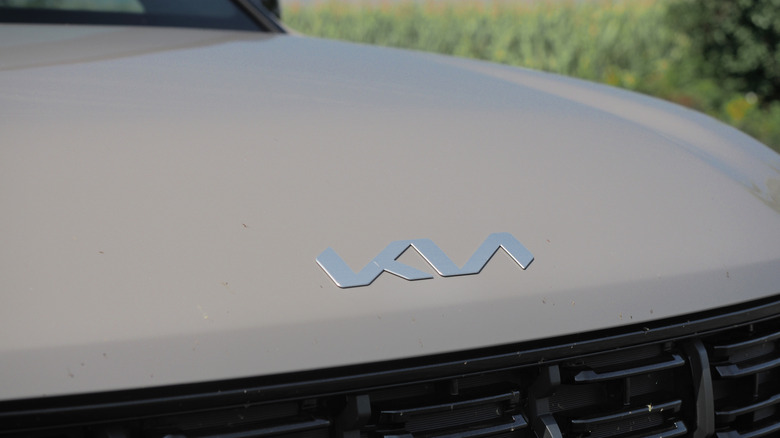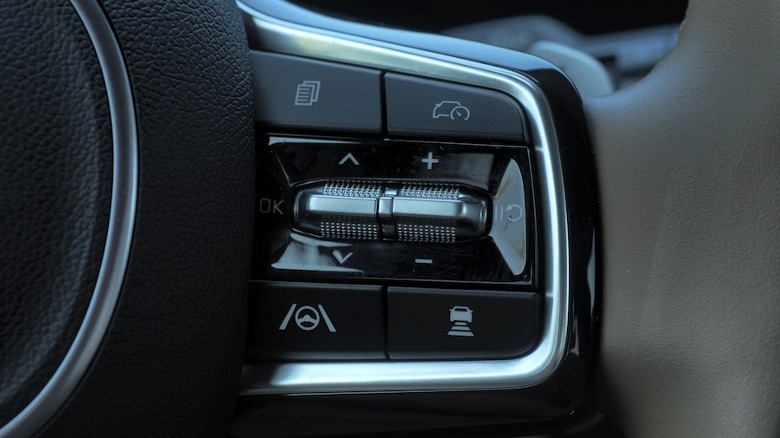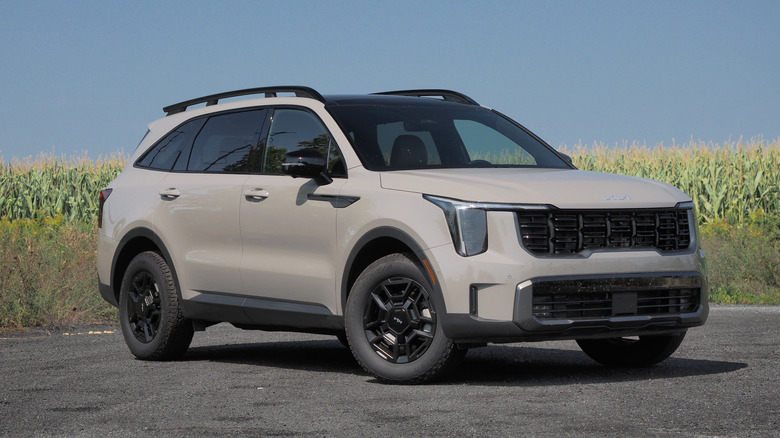2024 Kia Sorento Review: A Safe Choice Faces An Unexpected Rival
- Affordable pricing
- Higher trims are positively luxurious
- Turbo engine is punchy and smooth
- Fuel economy pales next to Sorento Hybrid
- Off-road trims are more looks than talent
- Dashboard controls can be confusing
Three-row SUVs are big business, but does a vehicle with room for the whole family need to be big, period? The Kia Sorento would argue no, slotting in-between the five-seater Sportage and the markedly-larger Telluride, and yet offering space for up to seven along with the flexibility to convert that into cargo room when the trip demands it.
The Sorento is also one of Kia's few "drivetrain triplets": while the entry-level SUV is gas-only, it can also be had in hybrid and plug-in hybrid variants. That's something the Telluride doesn't offer, though like the bigger SUV, the Sorento can deliver a positively luxurious experience in its more expensive trims.
Is that where the sensible buyer heads in the line-up, however, or is cheaper automatically better when it comes to Sorento ownership? And, with Kia splitting the Sorento into road-centric and more rugged-looking X-branded versions, is spending more on an X-Pro a wise decision? The answer, it turns out, is more complicated than you might think.
Two adult-size rows and one for kids
2024 Sorento ownership kicks off at $31,990 plus $1,375 destination. Base LX and S trims come in seven-seat configurations, with a three seat second row. All other Sorento trims swap that bench for a pair of captain's chairs. LX gets cloth upholstery; it's swapped for faux-leather on the S (from $34,390), EX, SE, and SX trims, and real leather on the SX Prestige (from $46,390).
All but the LX have heated front seats, the SX and SX Prestige adding ventilation; only the SX Prestige has second row outboard seat heating, a heated steering wheel, and driver's seat position memory.
As you might expect, the first and second rows are spacious, while the third is more kid-scale. Accessing it is, at least, straightforward, with quick-release buttons on the second row seats.
Still, most of the time I dropped the third row down to expand the snug 12.6 cu-ft trunk to as much as 45 cu-ft (depending on how far back the second row is pushed). That's only 1 cu-ft down from a larger Telluride, though Sorento's 75.5 cu-ft total with both rows down is about 11 cu-ft less than its bigger sibling offers.
Off-road looks don't mean off-road talent
It's a handsome SUV from most angles, though the headlamp clusters might leave you thinking of Cadillac. If the styling of the Hyundai Santa Fe — which shares an unibody platform with the Sorento, not to mention engines — is a little too aggressive for you, Kia's more restrained aesthetic could be a welcome compromise.
Like other models in Kia's lineup, the Sorento splits into two distinct flavors. More mainstream models start out with 17-inch alloy wheels, rising through 18-inch versions on the S trim, and then landing on 20-inch gloss black finish versions on the EX, SX, and SX Prestige. They get a mix of chrome or gloss black exterior trim, though tinted rear windows and tailgate glass are standard across the board. A power tailgate is standard from the EX up.
The "X" branded trims — X-Line and X-Pro — lean into a more rugged interpretation of the family SUV. That means 17-inch matte black wheels with all-terrain tires, along with matching roof rails and other exterior trim. Still, that doesn't necessarily equate to greater off-roading talent beyond the somewhat grippier rubber: ground clearance remains at 6.9-inches, and the approach and departure angles are unchanged, too.
A few key improvements on the dashboard
All 2024 Sorento trims have a 12.3-inch center touchscreen (all but the base LX include navigation); LX, S, and EX have a 4-inch driver display, while SX (from $41,690) and SX Prestige swap that for a fully-digital 12.3-inch version. All get SiriusXM; a Bose audio system with 12 speakers on the SX Prestige models swaps out the default six-speaker setup.
Like the smaller Niro, Kia uses its space-saving double duty switchgear in the Sorento. In one mode, the touch-sensitive strip offers multimedia controls and shortcuts to different areas of the infotainment; tap a button, and it flips over to climate control. A little physical distinction around that mode-switch key would go a long way, though probably not do much to dent the number of times I cranked the A/C down thinking I was adjusting the volume.
At least Apple CarPlay and Android Auto have been liberated from the USB cable. The 2024 Sorento supports wireless smartphone projection, while the charging ports are now consistently USB-C throughout the cabin.
All trims get two in the front row, two in the third row, plus 12V outlets in the second row and trunk. All but the base LX add a further two USB-C, for the second row, and a wireless charger in the front; SX Prestige trims add a 115V AC outlet in the trunk, too.
The turbo engine makes a difference
While the LX and S trims get Kia's 2.5-liter inline-four — with 191 horsepower and 181 lb-ft of torque — paired with an eight-speed automatic transmission, all other versions of the Sorento swap that for the far-preferable turbocharged variant. That pushes power up to 282 hp and torque to a far healthier 311 lb-ft, with an eight-speed dual-clutch transmission. Front-wheel drive is standard on the LX, S, EX, and SX (with AWD a $2,000 option on the S). From the X-Line EX (from $41,690) up, there's all-wheel drive as standard, with a center-locking differential.
There are more reasons than just speed to go for the turbocharged engine. Where the cheapest Sorento trims are rated for 2,000 pounds of towing, the turbo-four kicks that up to 3,500 pounds. The Telluride, with its V6 engine, is rated for at least 5,000 pounds.
The flip side is economy. Front-wheel drive versions of the 2.5-liter non-turbo engine are rated for up to 26 mpg on the EPA combined test cycle; the turbo, in contrast, is rated for 23 mpg. That said, frugality isn't an impossibility. In my regular use — skewed, admittedly, a little more to highway driving than the EPA's cycles — I saw almost 26 mpg from the turbocharged Sorento AWD.
I'm not sure anybody expects their Sorento to be "fun" to drive, though Kia's decisions around gearing and throttle mapping do leave the turbocharged variant feeling peppy. The default "Normal" drive mode is neither as annoyingly languid as "Eco" nor as needlessly-frantic as "Sport"; a long highway jaunt left me impressed by the minimal road noise (even with the X-Pro's tires). Ride quality probably benefited from the 17-inch wheels and their allowances for greater sidewall. No, this isn't a sporting SUV, but it's comfortably dialed-in for everyday duties.
If you want better economy, get electrified
Those wanting even greater frugality have electrified options to choose from. The Sorento Hybrid (from $38,690 plus destination) could potentially hit 34 mpg combined in its all-wheel drive form, its electric motor making up what's sacrificed in switching to a far smaller, 1.6-liter turbocharged four-cylinder gas engine. Or there's the Sorento Plug-in Hybrid (from $47,990) with AWD as standard and 30 miles of electric-only range on a full charge.
Absent is a fully-electric Sorento, with Kia expecting drivers looking to oust internal combustion altogether to switch to the well-received (but more expensive) EV9. That three-row electric SUV is priced from $54,900, albeit in rear-wheel drive form with the 230-mile battery. You'll spend closer to $60k for the 304-mile battery version, and from $64k for all-wheel drive.
Kia's solid suite of safety tech is pretty consistent across the board. All 2024 Sorento trims get rear blind-spot collision avoidance assist, rear cross-traffic collision avoidance, forward collision avoidance assist, lane keep assist/follow assist/departure warning, and adaptive cruise control. S and EX trims add Highway Driving Assist (HDA), while above that there's HDA 2 with automatic lane-change. Rear parking sensors are standard from S trim up; SX and SX Prestige get a 360-degree camera and Blind View Monitor (beaming a live video of the adjacent lane to the driver's display when you hit the turn signal).
2024 Kia Sorento Verdict
As with the Telluride, Kia's Sorento does a surprisingly adept job at aping luxury SUVs from the class above, at least in higher trim levels. With this particular X-Pro SX Prestige example landing at $49,400 all-in, though, you do have to wonder if there are more strategic ways to spend your new car cash. Indeed, you don't even have to leave the Kia dealership for that.
The gas-only Sorento's biggest rival is, arguably, its hybrid sibling. At $46,890 (plus destination) in well-equipped SX Prestige trim, you really only sacrifice the X-Pro's burlier accessories but gain a 10+ point improvement in fuel economy. Based on the EPA's math for 15,000 miles of driving per year, that's a $750 annual fuel saving for the hybrid driver.
It's not quite such a clear-cut decision at the most affordable end of the Sorento range, true, where opting for the cheapest non-turbo gas engine saves thousands compared to the entry-level hybrid. Yet, I suspect most drivers will want the turbo's grunt, and the nicer dashboard tech, and convenience features like the power tailgate, at which point you're at the 2024 Sorento EX from $37,990 (plus destination). That's a compelling deal, but I can't help but feel that stretching just a little more for the entry hybrid would pay greater long-term dividends.
